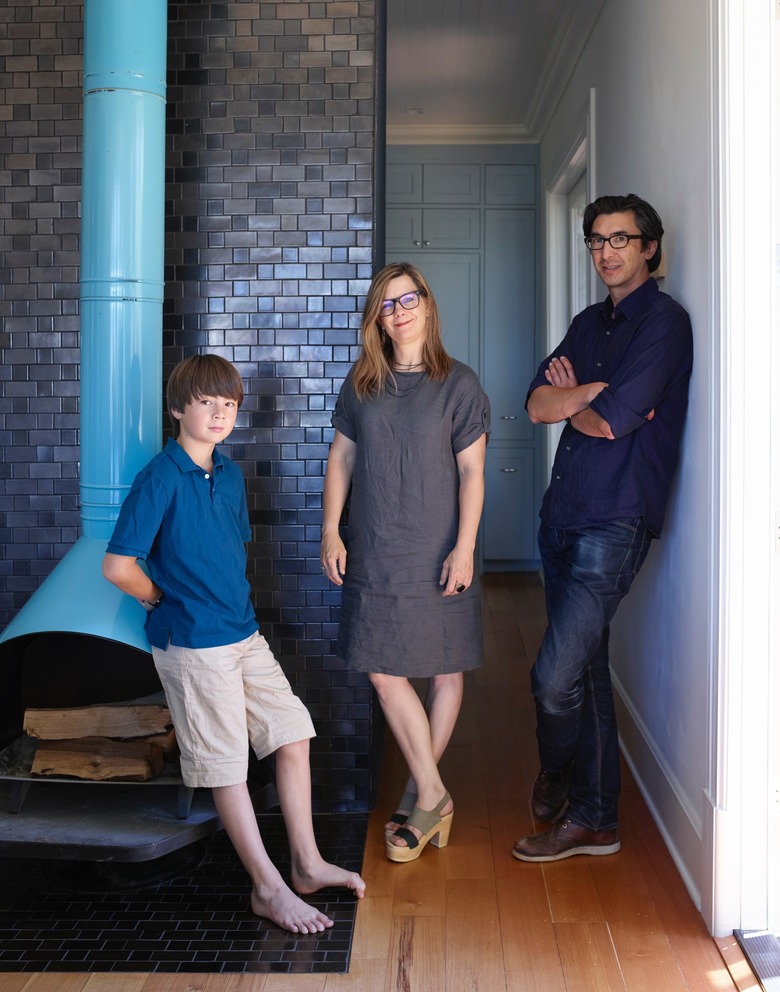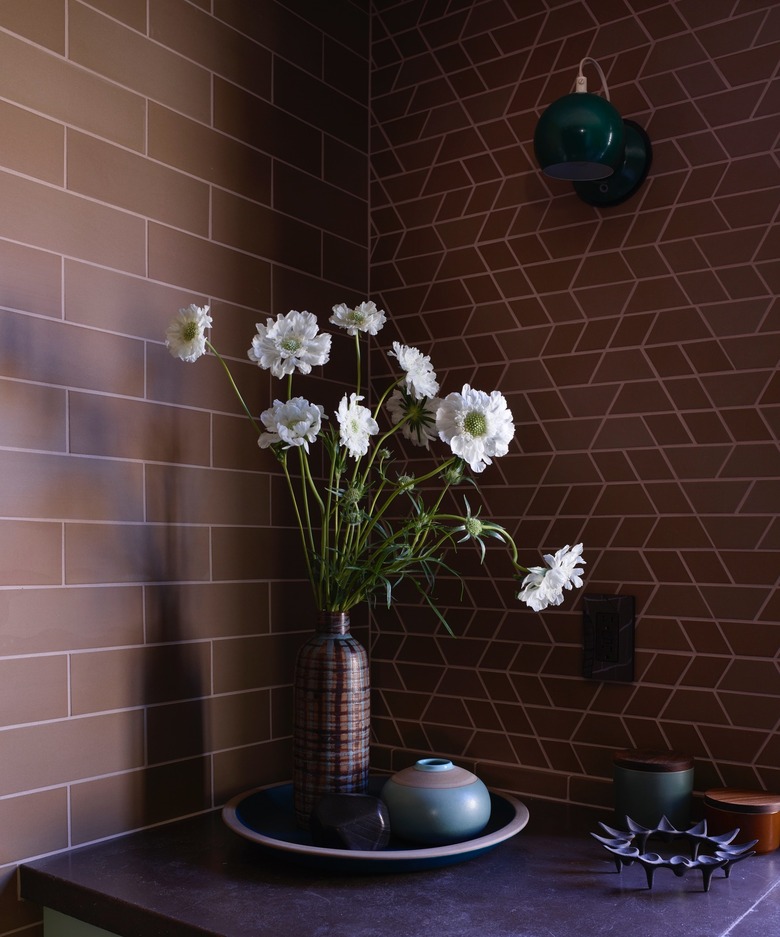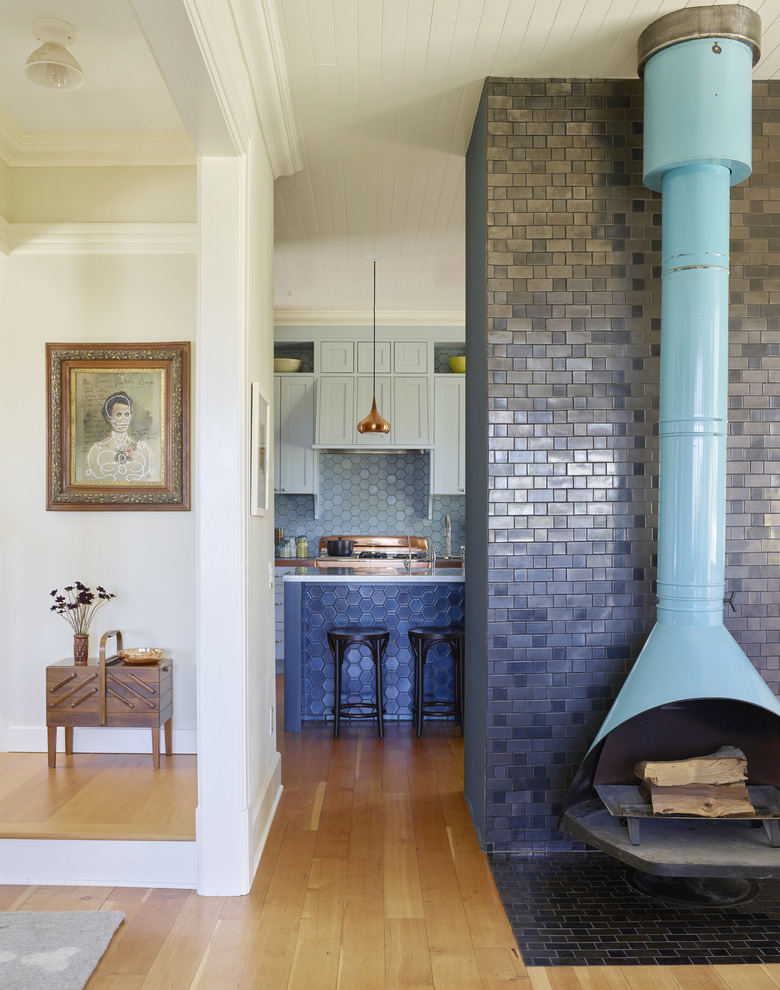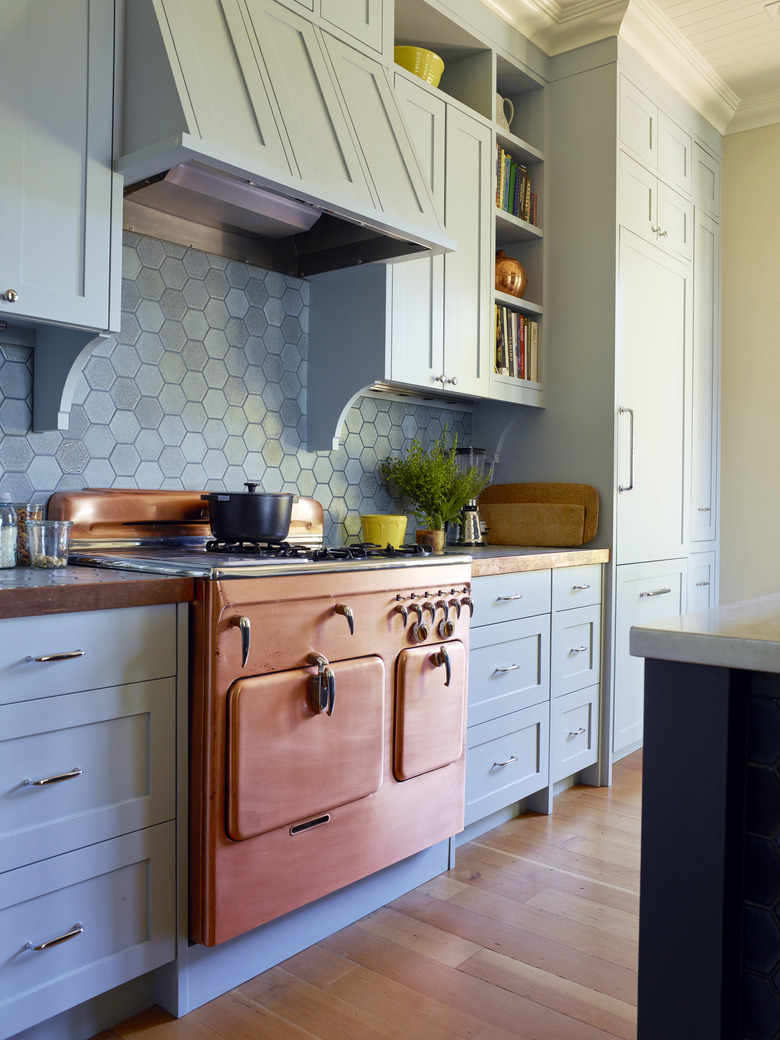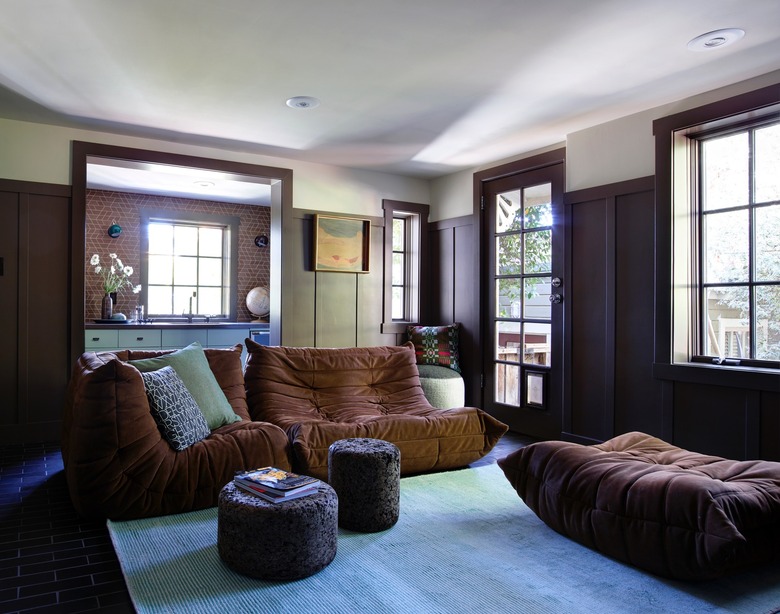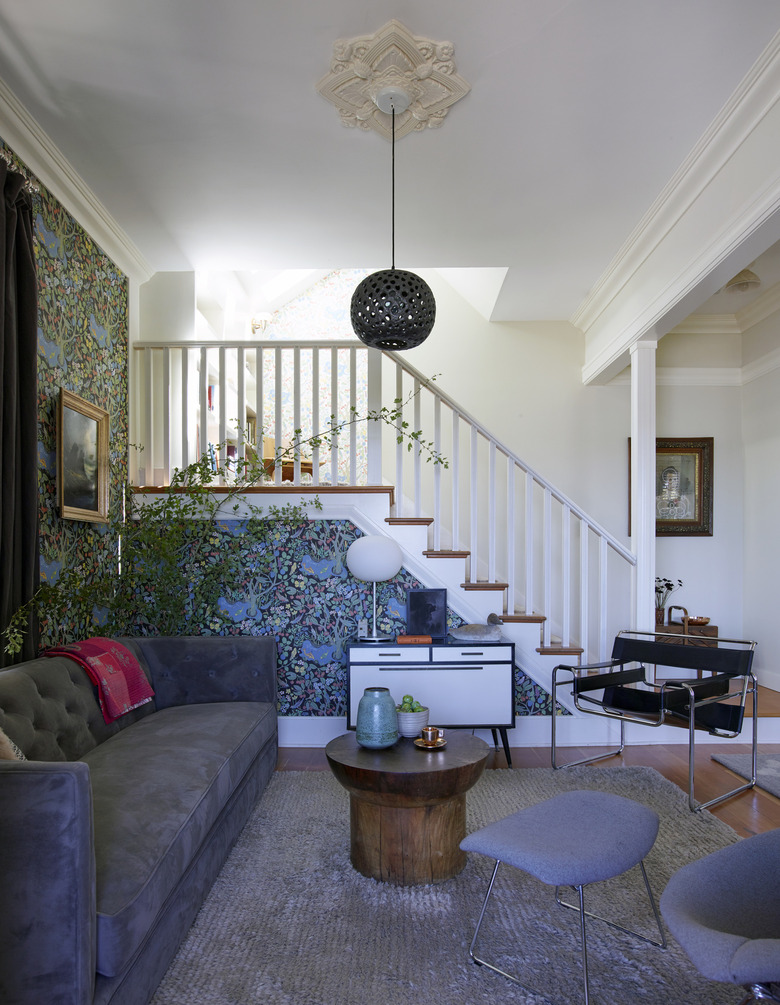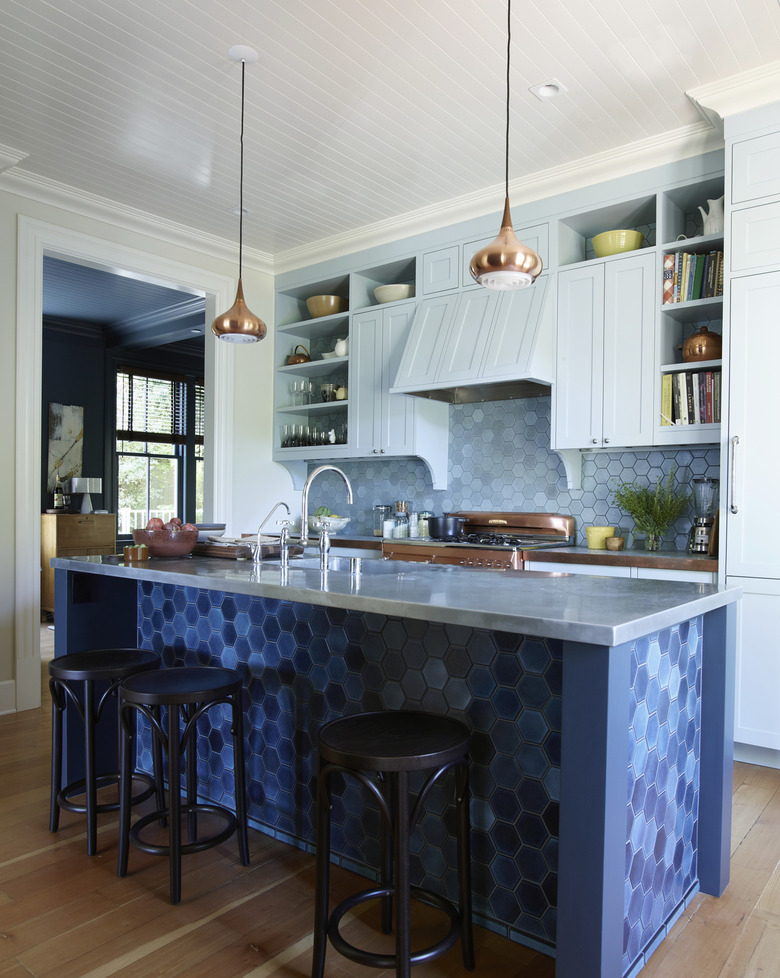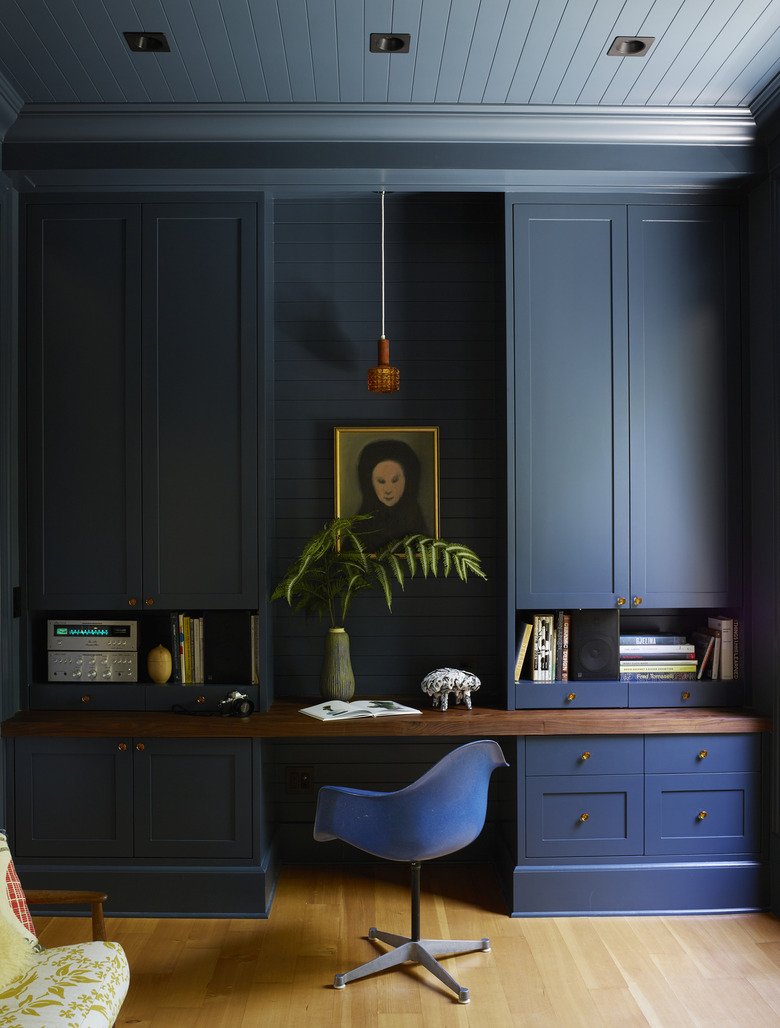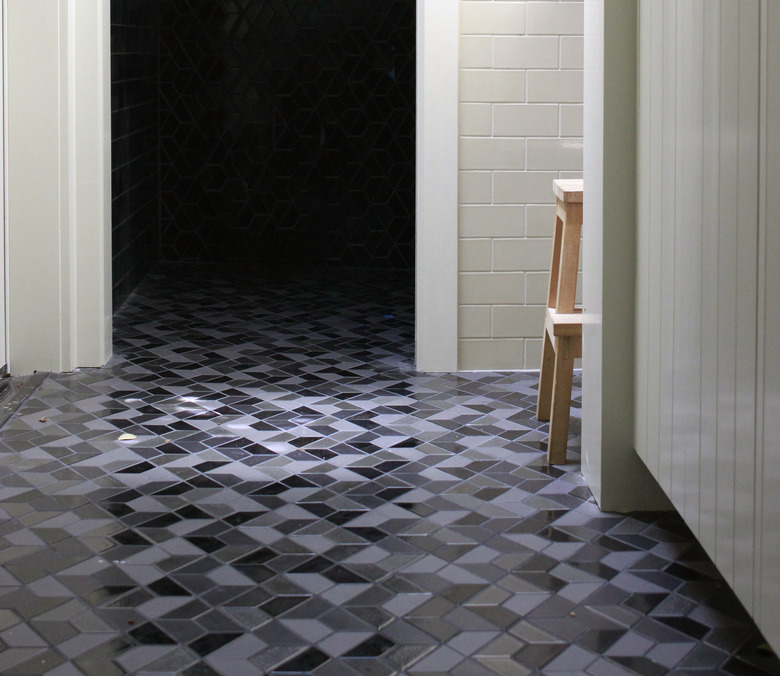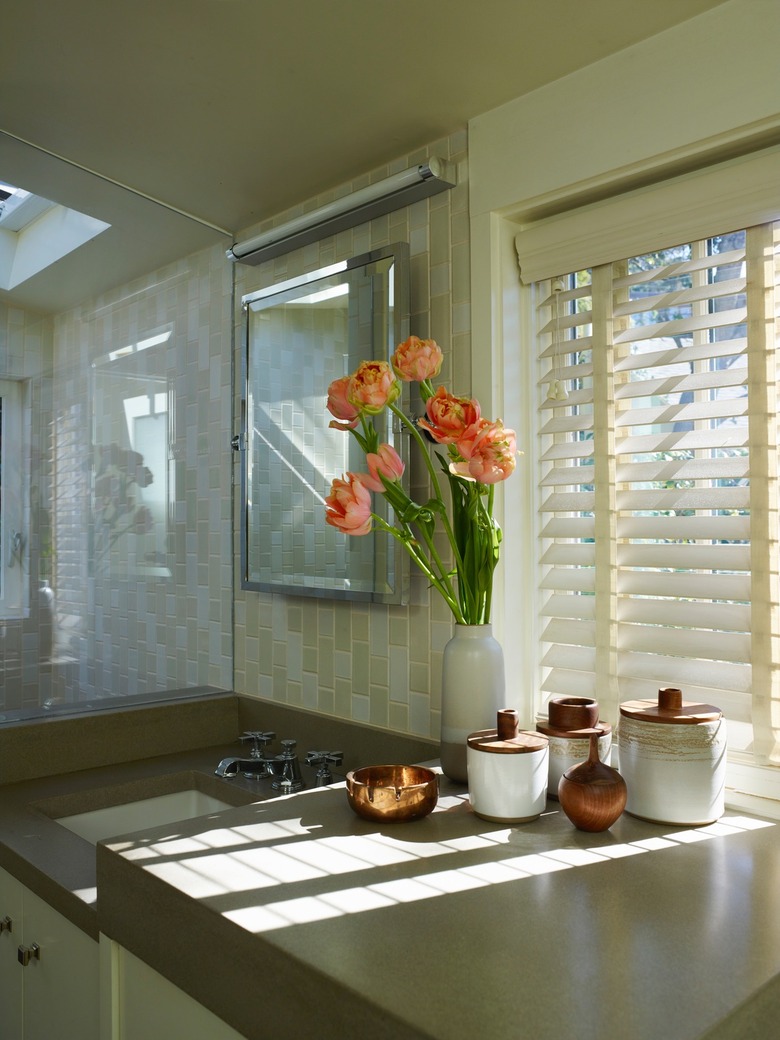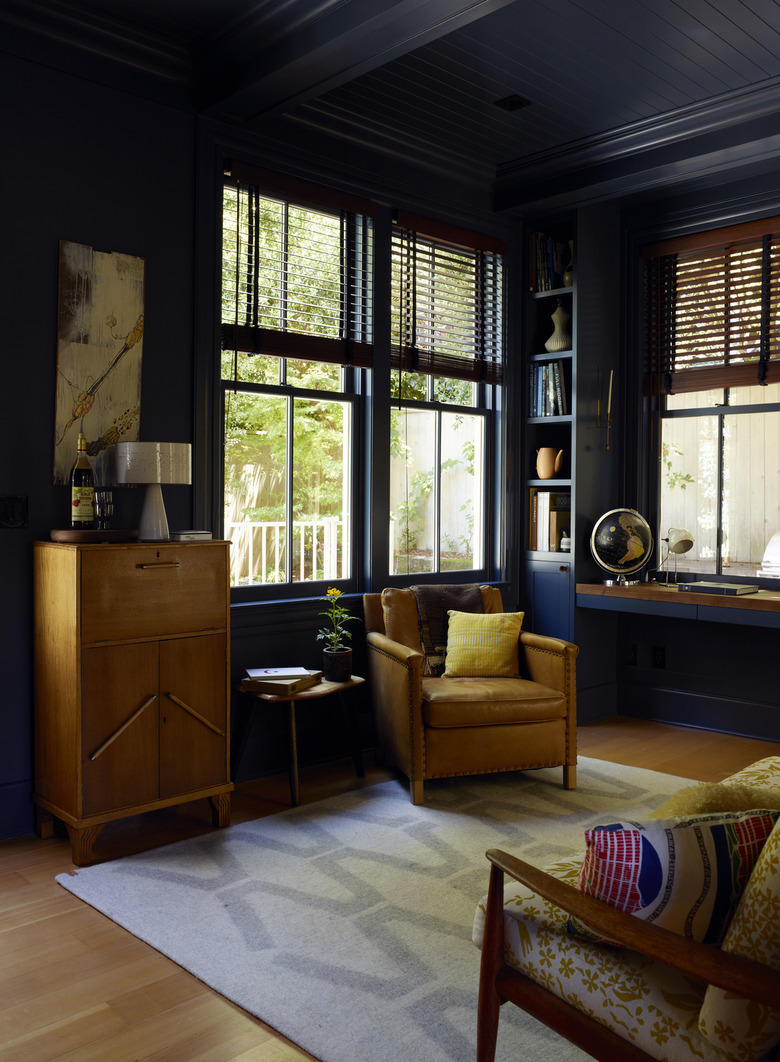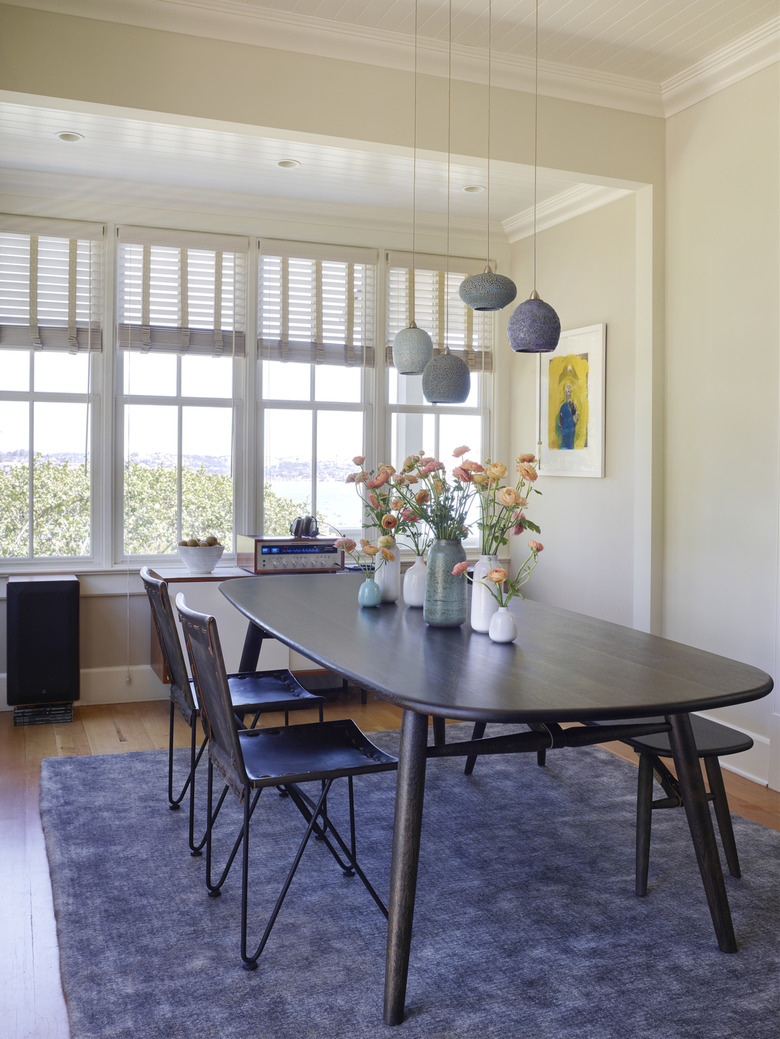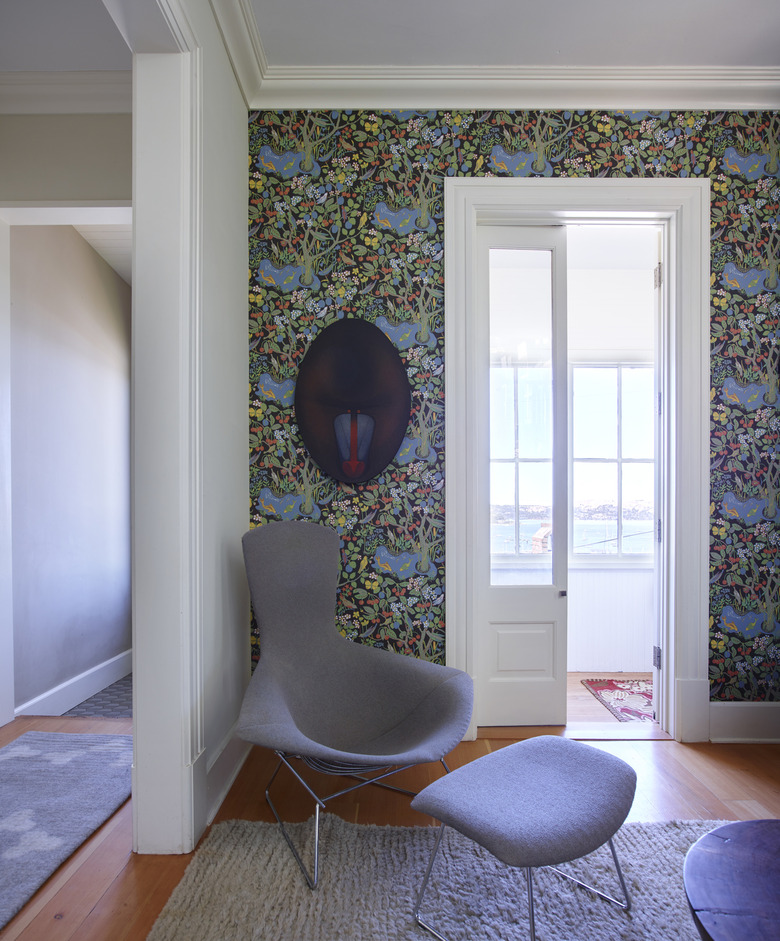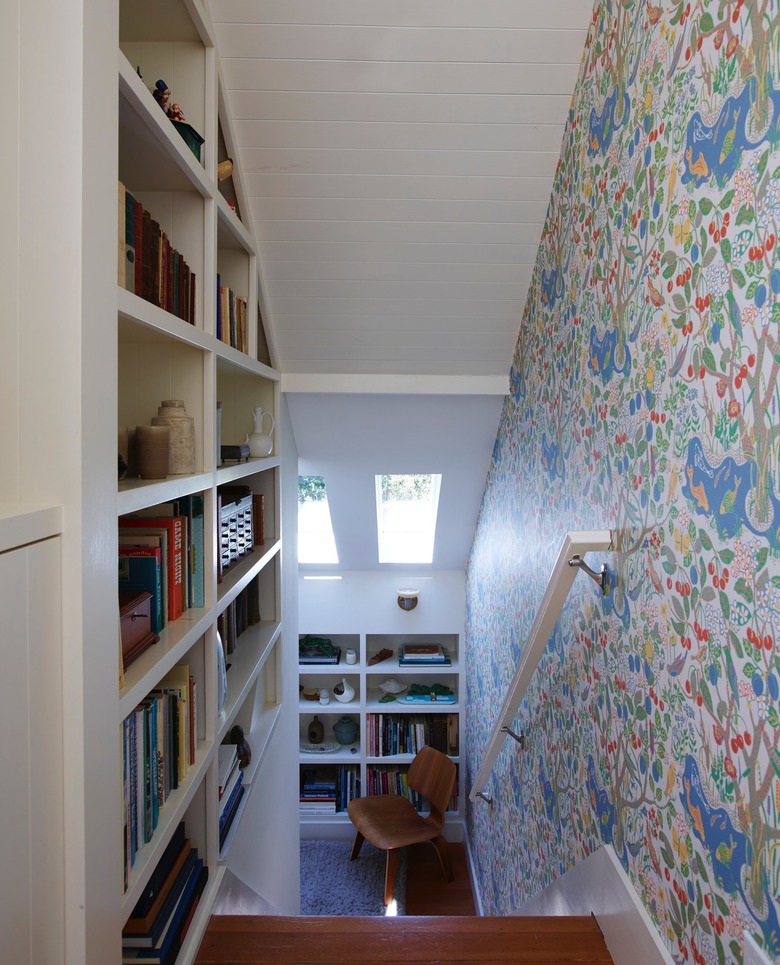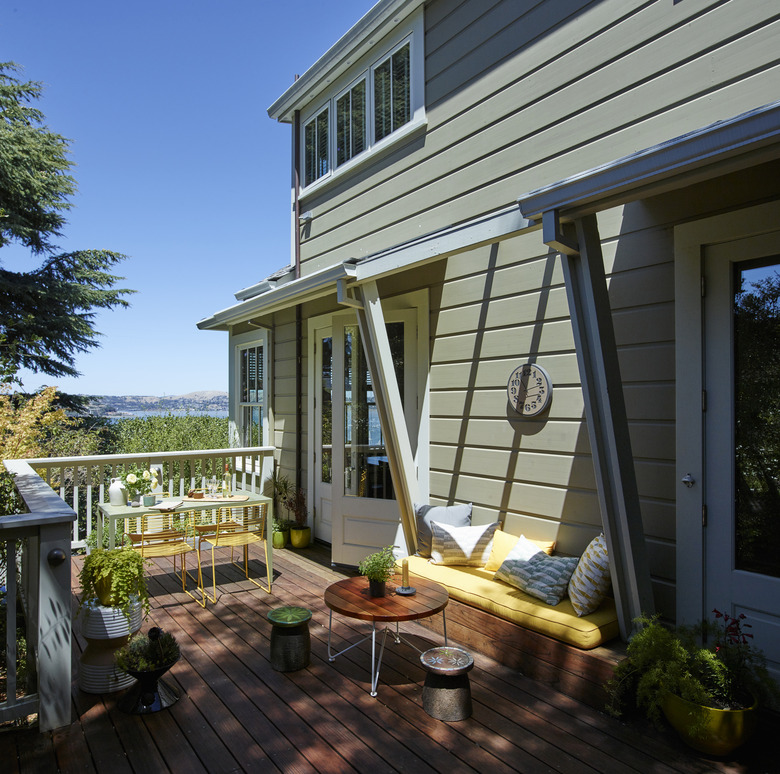Heath Ceramics Owner Dishes On Her Top Design Tips
To know Heath is to love Heath. The ceramics company, launched in Northern California in 1948 by wife-husband team Edith and Brian Heath, produced the kind of pottery that is passed down for generations. Beautiful in its simplicity yet substantial in its composition, their iconic clay products are enduring not only for their design and versatility, but even more so for the meaning its owners imbue them with.
"When I first saw Heath's dinnerware, I thought, This is of the earth. But there was design intent in a way I hadn't seen before," says Cathy Bailey, who took over the company with her husband, Robin Petravic, in 2003, after they happened upon Heath's Sausalito studio while on a bike ride. And it was love at first sight. "Their ceramics weren't so handmade that they felt like they were crafted so that each expressed something different. I felt that the aesthetic of the Heath products could go many different places ... it doesn't scream and steal the show, but as you get to know it, you become connected — you understand its subtle nature and you don't get tired of it. Also ... it's so damn durable that you don't have to replace it!"
As the couple showed some Heath products to their friends, they'd respond, "That's cool, my parents had that stuff!" This confirmed that they'd made the right decision to buy the company. "Oh, wow, something that your parents liked that you don't run away from? We realized how amazing that was," says Bailey. "It doesn't happen very often that a product transcends generations." And she and Petravic had just the backgrounds to carry on the Heath tradition: she, in industrial design, and he, in product design/engineering. "Those two careers are very good partners because as an industrial designer you need the engineering partner part to make your design dreams come true."
How Heath came to be part of their lives (chance and curiosity) and its lasting appeal (meaningful and durable) are consistent themes and values that inform Bailey's approach to design in her everyday life, as well as how she and her husband oversee the storied studio that they have grown to include exceptionally crafted furniture, bags, and accessories.
Here's how to bring some of Bailey's sensibility into your home, inspired by her experience renovating their family's century-old Sausalito farmhouse over the years.
1. Find your favorite thing or star item in a room — the hero — and design around it.
1. Find your favorite thing or star item in a room — the hero — and design around it.
Bailey: "For me, developing a style for a place always starts with something that I really have a strong connection to and that I love. Sometimes you can't articulate why, but I think with this house, the style developed out of the Svenskt Tenn wallpaper, designed in the 1940s by Josef Frank, and the turquoise 1950s FireHOOD fireplace. Those were the two things, the core, which I started with in 2005 [when we moved in]. I'm nervous before I start a project if I don't have that thing that I love to build the design around. There's a huge relief when I find that piece to build around, but then it sets up the next puzzle. Once I had that first piece for the house, the fireplace, I thought, Okay, somehow I'm rebuilding an 1889 farmhouse around a turquoise 1960s free standing fireplace. How's that going to work?"
"The next step in the design was picking the black tile behind the fireplace, two different Heath tiles: a 2-by-4-inch tile mixed with a 2-by-2-inch tile, and the glazes are called Hematite and Gunmetal. There's some metallic in there, so one is a warm metal and one is a cooler metallic, randomly interspaced, so it just plays with the light in a really nice way — it doesn't feel like a black wall. If I didn't have that fireplace, I might be scared of that black tile, or I might feel it's too risky, but it all worked together. The black set off the fireplace, and created contrast and a dark neutral texture, balancing it all out."
2. Consider how items will age before you bring them into your home.
2. Consider how items will age before you bring them into your home.
Bailey: "Five years down the line I got to design the kitchen, and I found a 1950 Chambers copper stove with chrome details. I had it refinished and used the colors of the kitchen to connect it back to the turquoise fireplace. I am always trying to think about how this thing that I love is going to age. I guess starting with something old in a way, it's a bit of a shortcut: If it's old and it's aged well, there's a pretty good chance it's going to continue to age well. It's already gone though that trend-resistance kind of phase. I think sometimes people don't think that way, and it's wonderful to think of a space and approach a space like that."
3. Embrace items with history and then layer with the new.
3. Embrace items with history and then layer with the new.
Bailey: "There are eras of design that I feel that I really have a strong connection to. I love Scandinavian design and its influence from the midcentury, and I like things that are old, that other people have loved [and] integrated into their lives. When you can see that age brings beauty to things, it feels good. I also like to embrace a few newer things. I fall in love with anything where good design and amazing craft are connecting, and those things get layered on top, and you end up with whatever you want to call my style."
4. Create spaces that bring people together and leave technology behind.
4. Create spaces that bring people together and leave technology behind.
Bailey: "When there are places for my family to work together or play a game together, and the surroundings actually inspire that to happen, that's what I'm always trying to create. Our house is set up specifically where you don't do technology on the floor where the bedrooms are, and so that hugely improves our quality of life. We want to have a life where we see each other. Even if we're doing work, you want to feel like you're connected in some way, so our house is set up to connect."
5. Gather your elements and options before you commit to major additions.
5. Gather your elements and options before you commit to major additions.
Bailey: "I feel like the important thing is to have all of the elements of your design together, so you can see them together ... basically lots of swatches and photos of the different elements that you are considering. Then look at what's in the next room and even the colors that are coming in through your window. This will guide you toward the right color, and will help you decide if [for instance] the tile will be a texture or if it can be the star of the show."
"With tile, if it is unglazed, you're going to see the pure color of the clay, and we make a wonderful medium-brown clay and warm-white clay. They give you a natural feel because it's just purely the clay and has a super matte finish. It absorbs light. Functionally, it is harder to clean than most glazed tiles, but it is really quite functional. [With] the glazed tile you can have a glossy surface or a matte surface or anything in between, and most tiles are super easy to wipe off. Heath makes our own glazes and can create what feels like an infinite amount of color and texture. You really get magic things happening with the glaze, especially if you layer different glazes in the manufacturing process. This is what is happening in our kitchen counter and backsplash ... the copper stove stays the hero, but the blue textured hex tile is the perfect backdrop."
6. Decorate with meaning, not to fill space.
6. Decorate with meaning, not to fill space.
Bailey: "We're not minimalists. We're personally surrounded [by] and working with people [who] are making incredibly beautiful things, and we can't live without looking at these things every day. We're also very nostalgic people, and everything in the house has a story and a meaning. There's nothing that was bought because we needed to just fill a space. That happens when you're having your first apartment, right? But over the years, those pieces that were insignificant get replaced with things that start to have meaning. So after 18 years [in our home], everything has a lot of meaning, and it feels like everything is essential!"
7. Reuse, reimagine, repair.
7. Reuse, reimagine, repair.
Bailey: "Waste culture is something we're really adamant about working toward mitigating at Heath, so that's really important to us in everything we're doing, with all projects. From remodeling to how we're manufacturing, it's top of mind. We reduced our waste from going to landfills significantly, which is a huge accomplishment. And I think about the same things we are learning about reducing waste in our work when I'm doing these projects at home. Whenever I start a new project, I think, How do we use what we have?"
"Work with people who are open to those type of ideas, and who want to build with good quality, but not perfection, because perfection usually requires everything out of the box new. All the reuse is exciting, like a puzzle. Where can you reuse these things? And I have come up with many projects because I would have materials or furnishings that I would need a place for. My next project, I have found mint green bathroom fixtures on Craigslist from the 1940s that [were] not expensive and so gorgeous, so I thought, Okay, the whole project is going to revolve around that."
8. Release your mind from the negativity of what it is now.
8. Release your mind from the negativity of what it is now.
Bailey: "If you're designing your bathroom on a limited budget, the first thing I'd ask is, can you find vintage fixtures? People are getting rid of those things for nothing. And the other thing is, can you reimagine your existing tile? If it's functional, if the whole context was different, can you keep it? Is it pink? Maybe that's okay if you find the right wall color to balance it. I know it's very hard for people to think that way, but you really can make it something so much better and so fresh if you can just release your mind from the negativity of what it is now."
9. Spend your money on things that last.
9. Spend your money on things that last.
Bailey: "There are things that shouldn't be kept. If something is not built well, then you really need to get something that's going to last you a long time. If you only have a little money to spend, don't waste it by painting over particleboard. There is so much old stuff that already is out in the world [that] with a few repaints [and] refinishes [and] reimagining, it's going to be better than a lot of the new stuff that you could get. I'm also the biggest paint advocate. You can transform and refresh anything with paint. You can even paint tile, you know. If that's the thing that's an eyesore and your budget won't allow for changes, paint it. It's totally doable. It probably won't last forever, but you're also not creating any waste and you're not spending much money."
10. Ponder pendants.
10. Ponder pendants.
Bailey: "There are some [pendant lights] in the bedroom, and they're over the dining table. Also, there's one that I love in the office, and more in the kitchen, but there is also more broad lighting in the ceiling. I like focused light, especially for atmosphere. In the bedroom, this is especially nice, and you can turn those off the ceiling lights and just leave the pendants as lighting as the evening is winding down. It's the same in the dining room and kitchen; the pendant lights are great for atmosphere, and they are pretty when not in use. The pendant lights in the dining room and the bedroom I designed with Adam Silverman, who is a ceramic artist and used to be our partner in L.A. when we opened our Heath store there, he had his studio in the store. Pendant lights are nice ceramic vessels!"
11. Prioritize natural light in your space.
11. Prioritize natural light in your space.
Bailey: "Not every day is a sunny day, but there's always something beautiful. It's always about finding the beauty even if you have a basement apartment — at least you have a window, I hope! And when that beautiful light is coming in that one window in your basement apartment, you can make sure everything is revolving around that, and that you are designing the space so that you can notice that beautiful light. Ask yourself, what is the beautiful thing in your place? Most people, no matter the budget, have some options when choosing or designing their space, and they shouldn't underestimate how important light is. So I'd suggest sacrifice space for better light, or character over size."
12. Whenever you're ready for a major refresh, remember where you've been.
12. Whenever you're ready for a major refresh, remember where you've been.
Bailey: "You need to look at your house and re-edit it, pare it back down to the amount of stuff you had when you moved in. And that's where we're at right now [with our home]. So ask yourself, what are your favorite things? And maybe find some new homes for some of the other smaller things that have been layered on top, because it gets to be too much, [and] clutter is not good. I also like to continue [to] collect things that I love — so it's OK to rehome and regift some of those things to ensure that everything has room to breathe."
